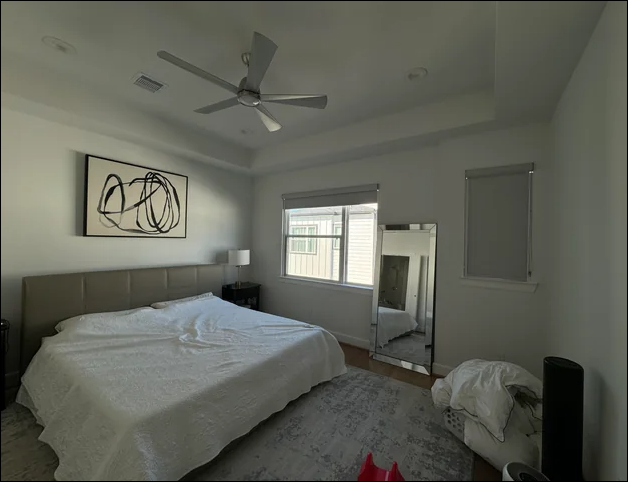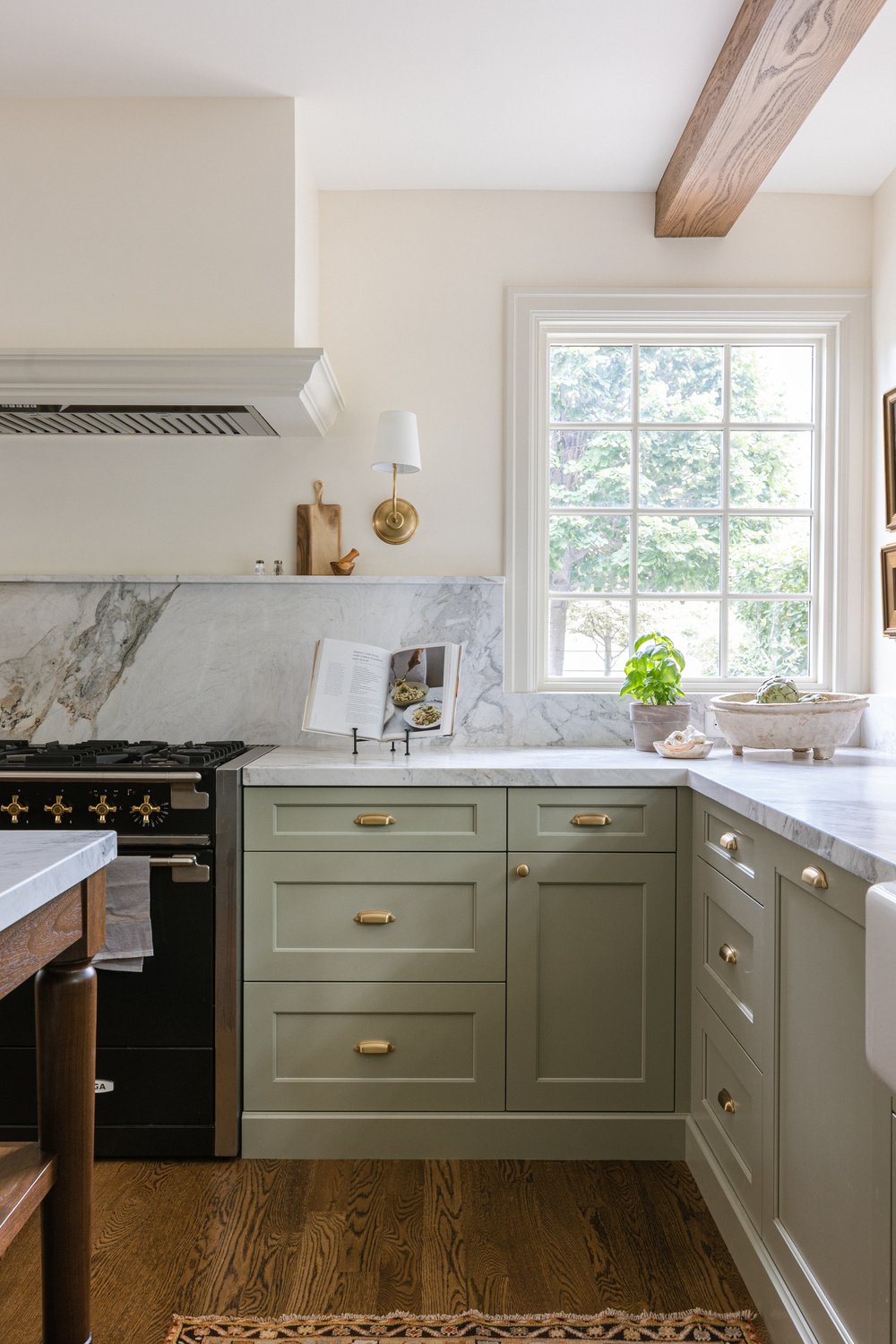This post contains affiliate links.
Dear danica,
We have this challenging wall in our primary bedroom that we are unsure how to dress. We would ideally like to cover both windows with light-filtering curtains but they are not on the same plane. We’ve been sitting for months with decision paralysis and your insight would be helpful!
– Phuong

I can see why you’ve been sitting on this decision for a while. It’s a perplexing window situation that will require some creativity. For the readers who are curious what the homeowner means by “the windows are on different planes,” the wall with the narrower window bumps in further than the large window wall. The right side of the mirror is where the wall comes in from what I can tell.
The homeowner was kind enough to provide a floor plan!

You may be surprised, but I actually think that the change of planes makes window treatments easier to choose. I’ll explain why in a bit.
I’ll propose 2 options.
WINDOW TREATMENT OPTION #1
Because the walls are on two different planes, we can address them as two separate units on two separate walls. Therefore, we can consider two different types of window treatments.
I propose using curtains on the large window and a matching shade on the small window. If you choose a patterned curtain, use the same fabric on the shade. This company offers matching curtains and shades in a wide variety of fabrics/patterns. My reason for this suggestion is that with such a large wall, two sets of curtains may overwhelm the room.
If you do a set of curtains and a matching shade, I would also encourage you to add a small piece of furniture below the small window. Perhaps a little 3 drawer dresser or a chest of some sort. Even an antique chair would do. This would balance the visual weight between the two windows while simultaneously making the small window feel like an intentional moment rather than an awkward afterthought.
As for the curtains, I’d recommend a standard rod hung just below the tray ceiling. Hang the rod of equal distance on either side of the window and double your panels on each side if you have the space. The fullness of curtains is what differentiates a designer curtain from a cheap looking curtain.
WINDOW TREATMENT OPTION #2
If different window treatments don’t excite you, you can opt for curtains on both windows instead. Because the depth of the wall change doesn’t appear to be significant, curtains may disguise the change of plane at first glance.
I would still treat them as two separate windows with two separate rods and two sets of curtains. The curtains on the small wall will most likely cover part of the window, but that’s a sacrifice you’ll have to make if you want to do curtains on both windows.
FINAL THOUGHTS
I would personally go for option 1. But try a set of matching curtains to see how it looks. Then try one set of curtains and rig matching fabric on the small window to get an idea of what that would look like. You may find that one option sparks more joy for you than the other.
Shop Matching Curtains And Shades

Leave a Reply Cancel reply
Where behind the scenes, exclusive advice, and candid conversations are sent straight to your inbox every week.



Hi I have leaded light rectangle panes of glass do you think it’s too busy for shutters ? Or blinds I have a large bay window too